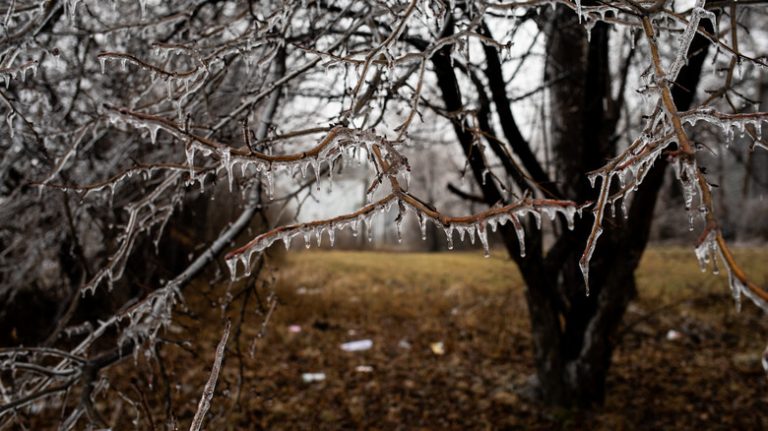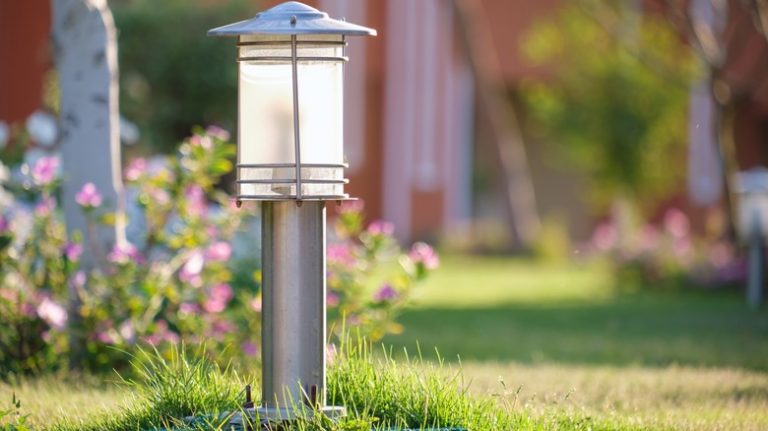Red tip photinia, or Photinia x fraseri, is a popular evergreen shrub that is prized for its vibrant red foliage. This beautiful plant is native to the southern United States and is commonly used in landscaping due to its ability to quickly form dense hedges. In this article, we will discuss how to choose, plant, and care for red tip photinia to ensure it thrives in your garden.
When selecting red tip photinia, it is important to choose healthy plants that are free from any signs of disease or pests. Look for plants with bright green leaves that are free from spots or discoloration. It is also important to consider the size of the mature plant, as red tip photinia can grow up to 20 feet in height and spread up to 15 feet in width.
Red tip photinia thrives in full sunlight, so it is important to choose a planting location that receives at least six hours of direct sunlight per day. The soil should be well-drained, as this shrub does not tolerate wet or waterlogged conditions. If your soil is heavy clay or tends to retain water, consider amending it with organic matter to improve drainage.
When planting red tip photinia, it is best to space the shrubs at least 10 feet apart to allow for proper airflow and to avoid overcrowding. To create a dense hedge, plant the shrubs in a staggered pattern, with the top of one shrub aligned with the bottom of the adjacent shrub. This will ensure that the plants fill in evenly and provide maximum privacy.
Red tip photinia is relatively low-maintenance, but it does benefit from regular watering, especially during dry periods. Water deeply and evenly, allowing the soil to dry out between waterings. It is also a good idea to mulch around the base of the shrubs to help conserve moisture and suppress weeds.
Pruning is an important part of caring for red tip photinia. This shrub can be pruned to control its size and shape, but pruning should be done in late winter or early spring before new growth begins. To encourage bushier growth and to maintain the vibrant red color of the foliage, prune the shrubs back by about one-third of their length.
In terms of pests and diseases, red tip photinia is relatively resistant. However, it is susceptible to fungal leaf spots, especially in humid conditions. To prevent this, avoid overhead watering and provide adequate spacing between shrubs to promote air circulation. If you notice any signs of fungal infection, such as black spots on the leaves, remove and destroy the affected foliage.
If you live in an area where red tip photinia is not well-suited, there are several alternatives that you can consider. Some good options include Japanese holly, cleyera, or fringe-flower. These shrubs offer similar characteristics to red tip photinia and can thrive in a variety of conditions.
In conclusion, red tip photinia is a beautiful and versatile shrub that can add vibrant color to your garden. By following the tips outlined in this article, you can ensure that your red tip photinia thrives and continues to be a focal point in your landscape for years to come.
Photinia x fraseri
Photinia x fraseri, commonly called red tip photinia or Fraser photinia, is a popular evergreen shrub that is known for its bright red new growth. It is a hybrid plant that is a result of crossing two different species of photinia. The red tip photinia is often called a fringe-flower because of its showy red foliage.
To grow and care for red tip photinia, it is best to plant it in a location that receives full sun to partial shade. This shrub can tolerate a wide range of soil conditions but prefers well-drained soil. When planting, it is recommended to incorporate a planting mix, such as Espoma Bio-tone, to provide essential nutrients and enhance soil fertility.
Red tip photinia is known for its fast growth rate, and it can grow up to 12 feet tall and 8 feet wide. It is a cooperative plant that does well in most places across the United States, except for the arid regions of the Southwest. It pairs well with other shrubs, such as holly and cleyera, and can be used for hedging or screening purposes.
Watering is an important aspect of caring for red tip photinia. It needs to be watered regularly, especially during dry periods. It is important to water deeply and avoid frequent shallow watering to encourage deep root growth. Avoid over-watering, as this can lead to root rot. Applying a layer of mulch around the base of the plant can help retain soil moisture and moderate temperature.
Fertilizing red tip photinia is recommended, especially during the growing season. A balanced, slow-release fertilizer, such as Ferti-Lome, can be applied according to the package instructions. It is also important to re-apply mulch and fertilizer annually to provide the necessary nutrients for healthy growth.
Red tip photinia is generally a pest-free plant, but it can be susceptible to certain diseases. To prevent fungal diseases, such as leaf spot or powdery mildew, it is important to choose disease-resistant varieties and avoid overcrowding plants. If necessary, fungicide sprays can be used according to the instructions provided by the manufacturer.
Pruning red tip photinia should be done right after the spring bloom. This will help maintain a compact shape and encourage new, vibrant growth. It is important to only prune lightly and avoid heavy pruning, as this can result in the loss of its signature red-tipped foliage.
If you have any questions about red tip photinia or need advice on how to grow and care for it, consult your local university cooperative extension or horticulture experts. They can provide you with specific information tailored to your location and conditions.
How to Grow and Care for Red Tip Photinia
The Red Tip Photinia (Photinia serrulata), also known as the Red Tip or Red Top Photinia, is a popular plant choice for screening and hedging. It is often used as a colorful backdrop in gardens due to its vibrant red foliage and white flowers that appear in spring. This shrub is native to China and has become a favorite in many landscapes due to its beautiful foliage and ability to grow in a variety of conditions.
To grow Red Tip Photinia, choose a location that receives full sun to partial shade. This plant can tolerate a wide range of soil types, but it prefers well-drained, slightly acidic soil. It is important to provide regular watering, especially during the first year of growth, to establish a strong root system. Once established, the Red Tip Photinia is relatively drought tolerant and does not require frequent watering.
When it comes to pruning, Red Tip Photinia can be pruned according to your particular preferences. It is best to prune in late winter or early spring before new growth appears. Pruning not only helps to maintain a desired shape, but it also encourages new growth and flowering.
To keep the Red Tip Photinia healthy and disease-free, it is important to provide proper care. This includes regular fertilization with a balanced fertilizer, such as 10-10-10, in early spring and late summer. It is also recommended to apply a layer of mulch around the base of the plant to help retain moisture and suppress weeds.
In terms of pests and diseases, Red Tip Photinia can be susceptible to leaf spot, which is often caused by a fungus. To prevent leaf spot, avoid overhead watering and remove any diseased leaves or branches. If leaf spot does occur, it can be treated with a fungicide according to the manufacturer’s instructions.
For those looking for compact alternatives to Red Tip Photinia, there are several other shrubs available. Some recommendations include Chinese Photinia (Photinia × fraseri), Cleyera (Ternstroemia gymnanthera), and Osmanthus (Osmanthus spp.). These shrubs offer similar characteristics and can serve as excellent replacements or additions to your garden.
In conclusion, Red Tip Photinia is a versatile shrub that provides vibrant red foliage, white flowers, and even fruits. It can be grown in a variety of conditions and is relatively low maintenance. With proper care, you can enjoy this beautiful plant in your garden year after year.
Red Tip Photinia Care
Red Tip Photinia (Photinia x fraseri) is a popular shrub among gardeners due to its vibrant red foliage. To ensure its optimal growth and health, it must be properly cared for. Here are some essential care tips for Red Tip Photinia:
Planting: Red Tip Photinia thrives in well-drained soil and requires full sun to partial shade. When selecting a planting location, choose an area that offers enough space for the shrub’s mature width and height.
Watering: Red Tip Photinia prefers moderate watering. Ensure that the soil is evenly moist but not overly saturated. Watering frequency may vary depending on factors such as temperature and rainfall. During dry periods, it is important to water the plant more frequently.
Fertilizing: Apply a balanced, slow-release fertilizer to Red Tip Photinia in early spring. This will provide the necessary nutrients for healthy growth. Insufficient fertilization may result in slow growth and sparse foliage.
Pruning: Red Tip Photinia can be pruned to maintain a desired shape and size. It is best to prune the shrub in early spring or after it has finished blooming. Remove any dead, damaged, or diseased branches. Additionally, removing the tips of new growth will promote bushier growth and a more compact appearance.
Pest and Disease Control: Red Tip Photinia is generally resistant to pests and diseases. However, it may occasionally be susceptible to leaf spot. To prevent leaf spot, avoid overhead watering and ensure proper air circulation around the plant. If leaf spot occurs, apply a fungicide spray according to the manufacturer’s recommendations.
Red Tip Photinia Alternatives: If you are looking for alternative shrubs that offer similar red foliage, consider selecting plants like Holly (Ilex spp.), Cleyera (Ternstroemia spp.), Fraser Photinia (Photinia x fraseri ‘Red Robin’), or Marble Fringe-Flower (Loropetalum chinense var. rubrum ‘Sizzling Pink’). Each of these plants provides a different aesthetic value while offering red-tipped leaves.
By following these care recommendations, you can ensure the proper growth and longevity of your Red Tip Photinia. Enjoy the vibrant red foliage of this popular southern shrub year-round!

